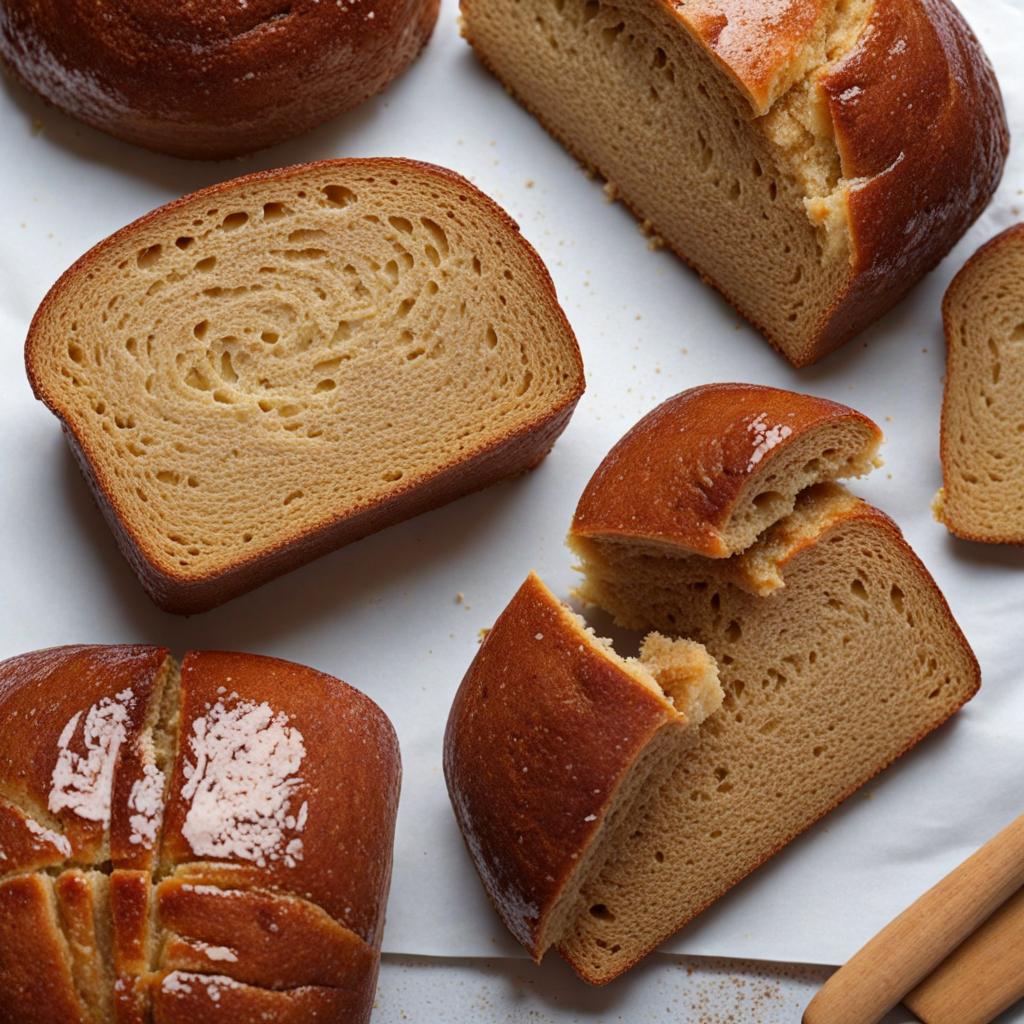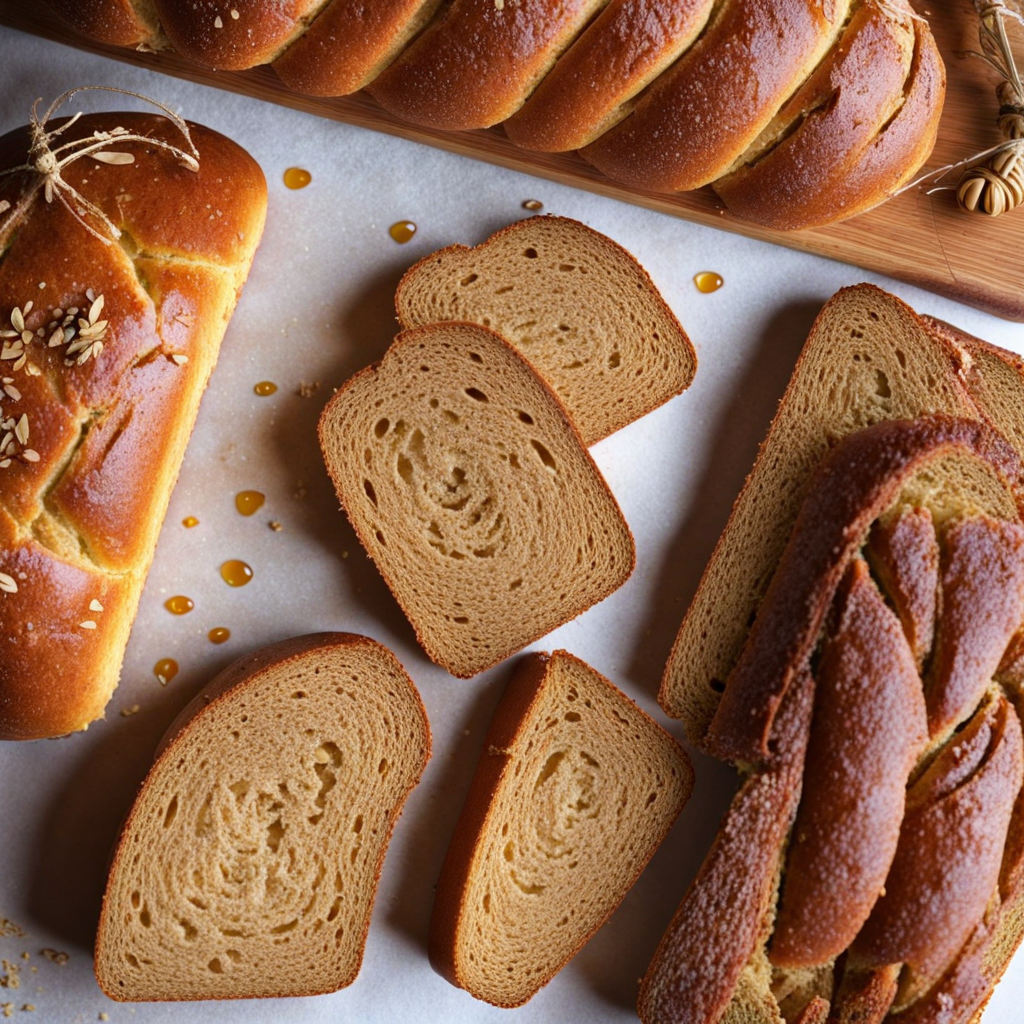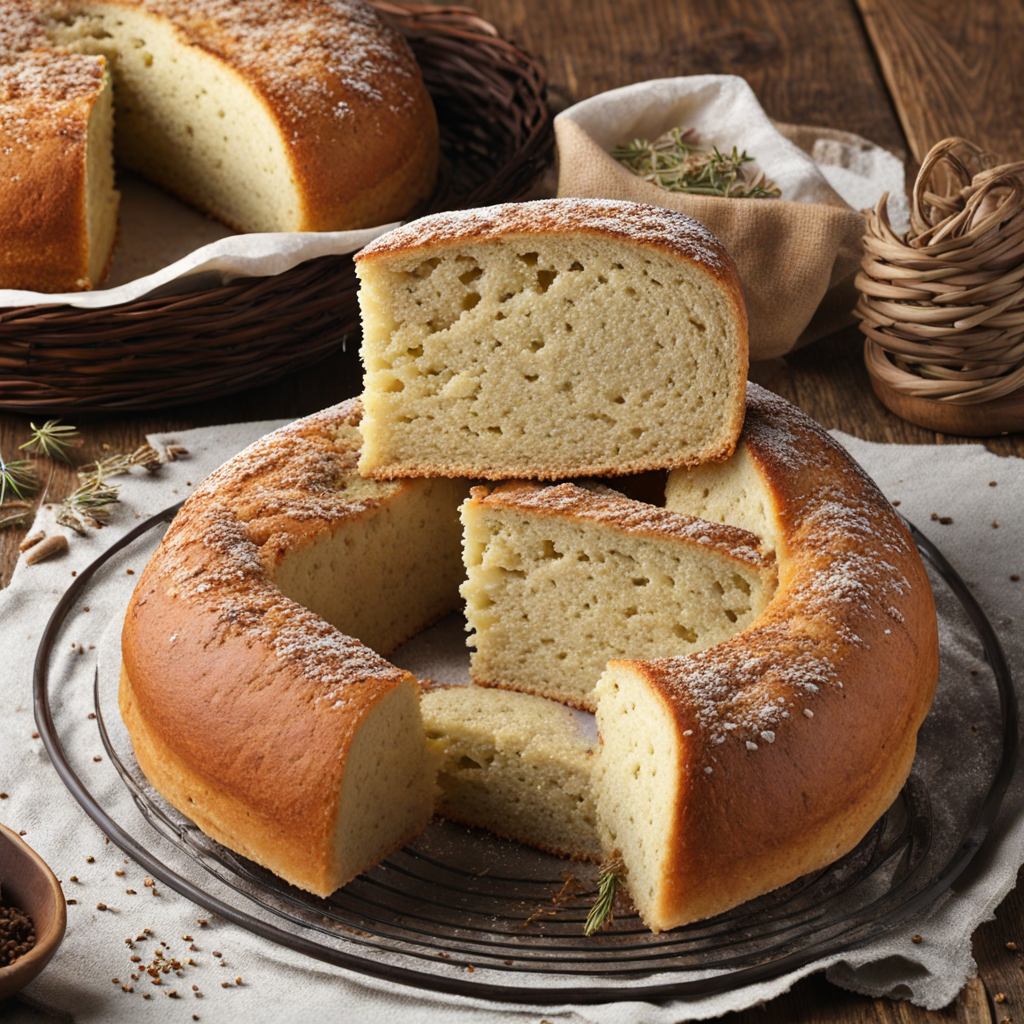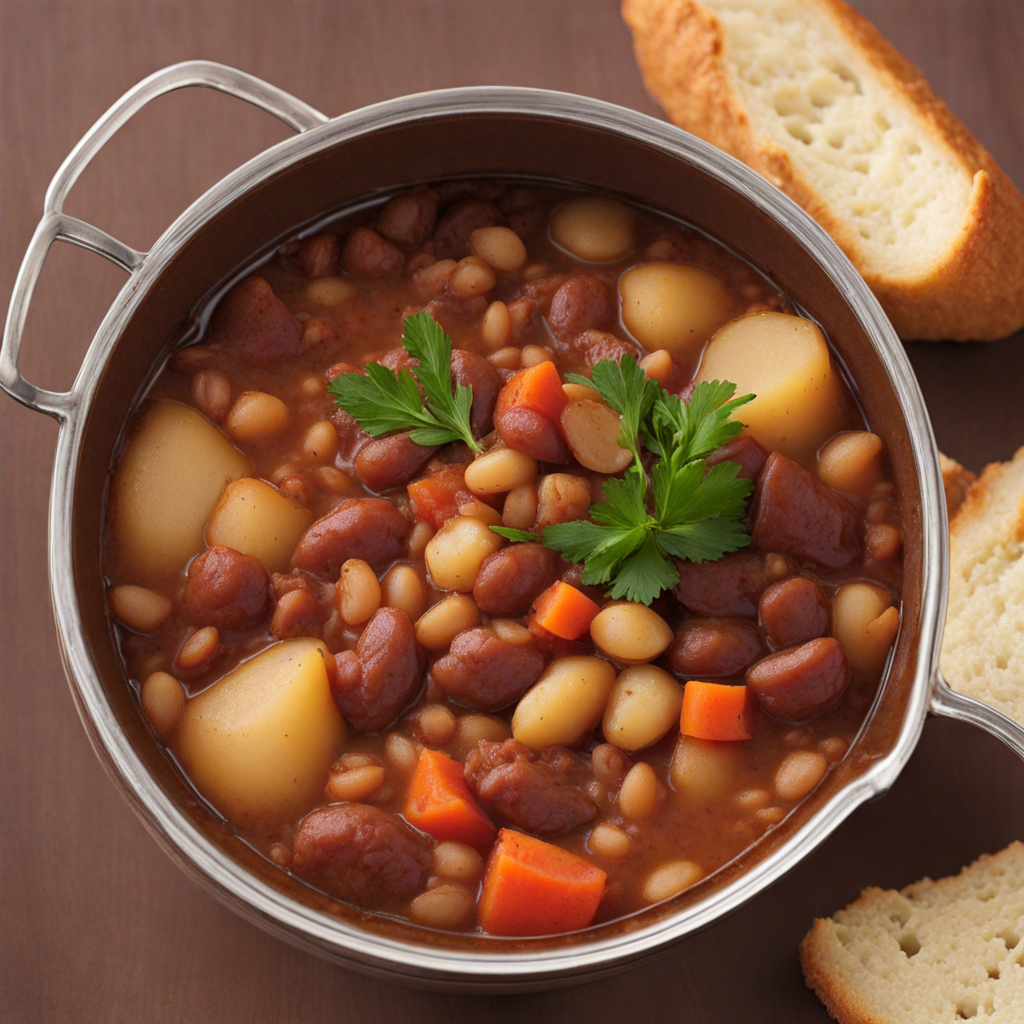Honey Bread
Honey Bread, known as 'medeni kruh' in Slovenia, is a delightful and aromatic treat that combines the natural sweetness of honey with the comforting texture of bread. This traditional Slovenian delicacy is often made with a blend of wholesome ingredients, including flour, honey, spices, and sometimes nuts or dried fruit, creating a rich and flavorful loaf. The honey not only imparts a distinct sweetness but also contributes to the moistness and tenderness of the bread, making each slice a truly satisfying experience. The unique flavor profile of Honey Bread is enhanced by the addition of various spices such as cinnamon, nutmeg, and ginger, which evoke warmth and coziness. The bread is typically baked until golden brown, resulting in a slightly crunchy crust that gives way to a soft and chewy interior. The aroma that wafts from the oven while it bakes is enough to make anyone's mouth water, as it fills the air with hints of sweetness and spice, inviting you to take a bite. Enjoyed as a snack, breakfast, or dessert, Honey Bread can be served plain or with a spread of butter, cream cheese, or even a drizzle of additional honey for those craving extra sweetness. It pairs wonderfully with a cup of tea or coffee, making it a perfect addition to a leisurely afternoon. Whether shared with friends and family or savored alone, Honey Bread is a delightful way to explore Slovenian culinary traditions and indulge in the simple pleasures of life.
How It Became This Dish
Medeni Kruh: The Honey Bread of Slovenia Origins of Medeni Kruh Medeni kruh, or honey bread, is a traditional Slovenian delicacy that embodies the rich agricultural history and cultural heritage of the region. Its exact origins can be traced back to the medieval period when honey was a staple sweetener in Europe. Slovenia, with its lush landscapes and thriving beekeeping traditions, became a natural home for this delightful treat. The earliest records of honey bread date back to the 12th century, though it is likely that variations of sweet breads existed even earlier. The use of honey as a sweetener was prevalent in many cultures, but in Slovenia, the unique geographical and climatic conditions allowed for a distinctive type of honey that contributed to the development of Medeni kruh. Cultural Significance Medeni kruh is not just a food item; it is a symbol of Slovenian culture and tradition. It has deep roots in the communal and religious life of the Slovenian people. Traditionally, it was made during special occasions, such as weddings, Christmas, and harvest festivals. The bread is often decorated with intricate designs, and these embellishments are rich with symbolism—representing fertility, prosperity, and protection. The process of making Medeni kruh is often a communal affair, with families coming together to bake and decorate the bread, reinforcing community bonds and familial ties. In Slovenia, honey and bees hold a revered place in the culture, with beekeeping being an age-old practice. The country is known for its diverse species of honey bees, particularly the Carniolan bee, which is celebrated for its gentle nature and high honey production. The significance of bees is so profound that Slovenia even has a dedicated day, World Bee Day, celebrated on May 20th, in honor of Anton Janša, a pioneer in beekeeping. Medeni kruh reflects this relationship with nature and the importance of bees in the Slovenian agricultural landscape. Development Over Time The evolution of Medeni kruh can be observed through its ingredients and preparation methods, which have changed in response to cultural exchanges and regional influences. Originally, the bread was made with simple ingredients: flour, water, yeast, and honey. Over time, additional spices such as cinnamon, nutmeg, and ginger were incorporated, enhancing its flavor and aroma. The introduction of nuts and dried fruits also became popular, making the bread not just a sweet treat but a more substantial snack. The decoration of Medeni kruh has also evolved. Historically, designs were often simplistic, reflecting the baker's skill and creativity. However, with increased artistry and the rise of culinary tourism in Slovenia, the intricate designs seen today have become more elaborate. Many bakers now use colored icing and fondant to create stunning visual representations, turning each loaf into a work of art that tells a story. In the 20th century, with the advent of industrialization and globalization, Medeni kruh faced competition from mass-produced baked goods. However, a resurgence of interest in traditional foods and artisan baking in the late 20th and early 21st centuries led to a revival of Medeni kruh. Local markets and festivals began to celebrate this traditional bread, and many families returned to the age-old recipes, valuing the craftsmanship and authenticity of homemade products over mass-produced alternatives. Today, Medeni kruh is not only a beloved Slovenian snack but also a symbol of national pride. It has found its way into the hearts and homes of many Slovenians, as well as into the hands of tourists eager to experience authentic Slovenian cuisine. Annual festivals often feature competitions for the best Medeni kruh, showcasing the talent and creativity of local bakers. Modern Interpretations and Global Reach In recent years, modern interpretations of Medeni kruh have emerged, catering to contemporary tastes and dietary restrictions. Gluten-free and vegan versions of the bread are now available, ensuring that more people can enjoy this traditional treat. The rise of artisanal bakeries has also contributed to the bread’s popularity, with bakers experimenting with different flours, natural sweeteners, and flavorings, pushing the boundaries of this beloved recipe while still respecting its roots. Additionally, Medeni kruh has gained international recognition, being featured in Slovenian restaurants around the world and at food festivals that celebrate regional cuisines. This exposure has allowed the bread to transcend its local origins and become a part of a broader dialogue about traditional foods and their place in modern society. Conclusion Medeni kruh is more than just a sweet bread; it is a testament to Slovenia’s rich history, culture, and communal spirit. Its origins are rooted in the agricultural practices of the past, and its cultural significance is reflected in the traditions and celebrations of the Slovenian people. As it continues to evolve, Medeni kruh remains a vital part of Slovenian heritage, bridging the gap between the past and present while enchanting new generations with its unique flavors and artistic designs. Whether enjoyed during a festive occasion or as a simple snack, Medeni kruh serves as a delicious reminder of the importance of community, tradition, and the enduring legacy of Slovenian culinary arts. As Slovenia’s global presence grows, so too does the appreciation for this unique bread, ensuring that Medeni kruh will continue to be cherished for years to come.
You may like
Discover local flavors from Slovenia







